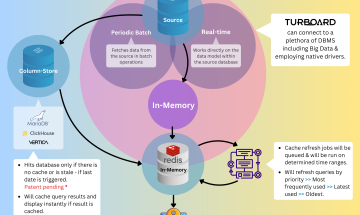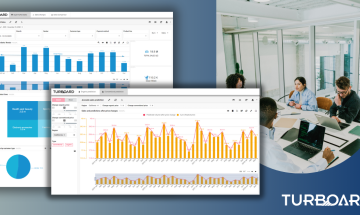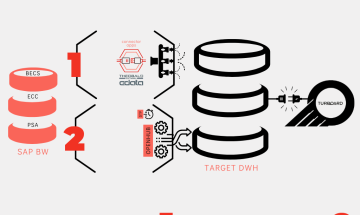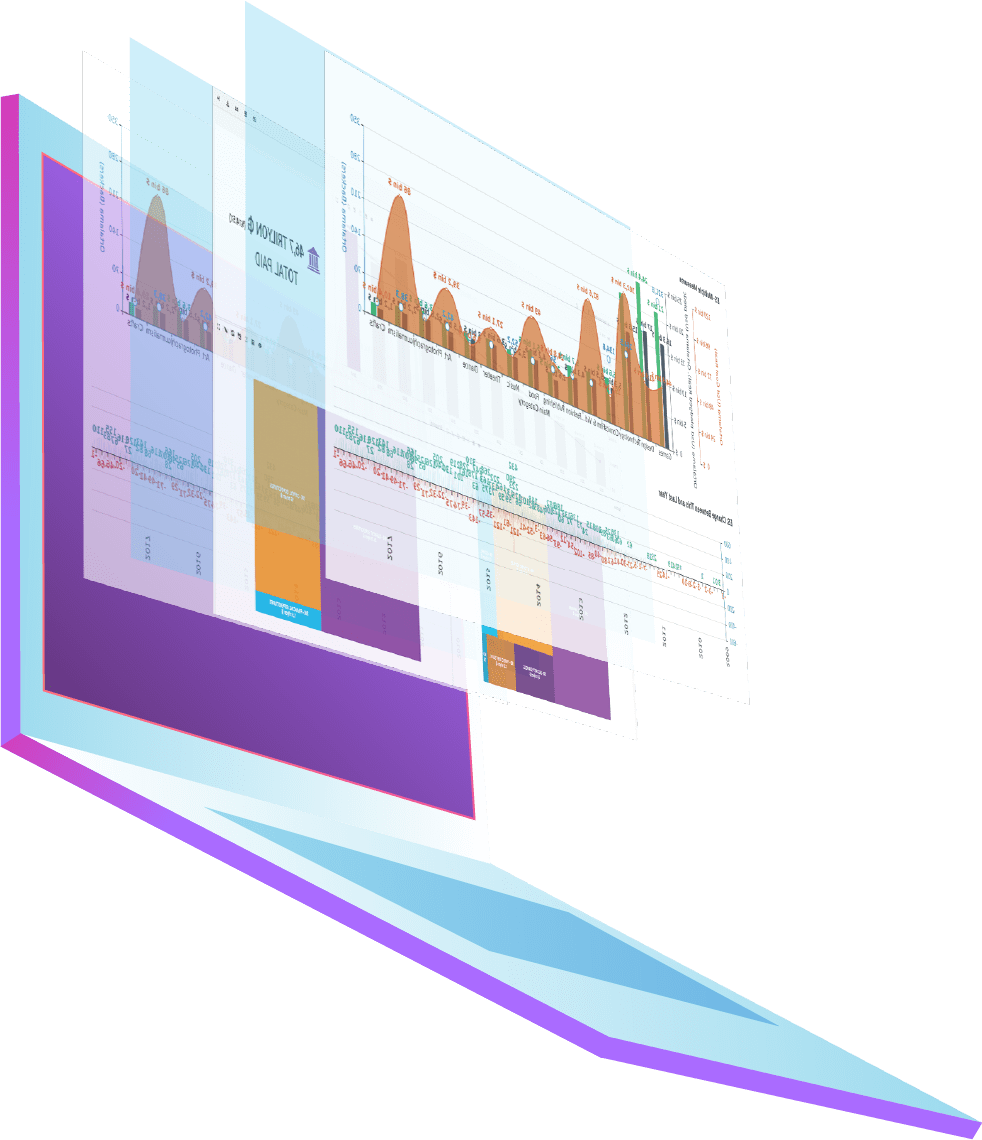
In the realm of business intelligence, Tableau has established itself as a widely acclaimed and renowned platform for its data visualization capabilities. It has garnered immense popularity and recognition, earning its place as a leading choice among BI tools. However, as with any technology, there comes a time when users begin to explore alternative solutions, seeking novel approaches that better align with their evolving needs. Many businesses have begun exploring alternative solutions that can better cater to their changing requirements.
One of those alternative solutions that has caught the attention of those seeking a fresh approach is TURBOARD. As we explore this topic further, we will shed light on the factors that have prompted some businesses to migrate from Tableau to TURBOARD, and will examine uncovering the compelling factors that have influenced this shift in preference.
While examining those factors, we aim to offer valuable insights into the unique advantages and benefits that TURBOARD brings to the table, without diminishing or downplaying the capabilities of either Tableau or TURBOARD when it comes to their core business intelligence functionalities. It's important to recognize that both platforms have their own strengths and features that contribute to their reputation as powerful business intelligence tools.
Providing valuable insights into their business transition from Tableau to TURBOARD, the testimonial from Murat Küçük, the CEO of Özhan Markets, sheds light on the compelling advantages they experienced:
“With TURBOARD, we could make the analysis we wanted with ease. We could easily connect to data sources. We run our own models with the AI applications. These points were so much easier, when compared to Tableau.”
Exploring TURBOARD and Tableau: A Comparative Overview
 |
 |
|
|---|---|---|
| Web Compatibility | TURBOARD stands out as a fully web-based platform, allowing users to access and utilize its features seamlessly through web browsers. This means that users can conveniently leverage TURBOARD's capabilities from any device with an internet connection and directly from their preferred web browsers, eliminating the need for specific machines or installations. |
Tableau's web version has certain limitations compared to its desktop counterpart. While Tableau does offer a web-based option, it does not encompass all the features and functionalities available in its desktop version. This disparity can sometimes pose challenges for users, as they may need to rely on specific machines or devices to access the full suite of Tableau's capabilities. This dependency on specific hardware can potentially hinder collaboration and productivity, especially for teams that require widespread access and real-time collaboration on data analysis and visualizations. |
| Performance on Big Data | When it comes to handling large-scale data sets, TURBOARD excels with its native connectivity to prominent big data warehousing solutions like Impala, Snowflake, Amazon Redshift, and more. TURBOARD's seamless integration with these platforms ensures high-performance data processing and analysis, enabling users to leverage the full potential of their big data resources. |
In contrast, Tableau may require additional licensing and connectors to establish connections with specific big data sources such as Amazon Redshift, HANA, and Hadoop. These additional steps can introduce complexities and potentially hinder the smooth integration of Tableau with these data warehousing systems. Such requirements not only add to the implementation efforts but may also incur additional costs for organizations looking to work with these specific big data sources. |
| Data Preparation | TURBOARD sets itself apart with its flexible data connectivity capabilities, offering seamless connections to a wide array of data sources in real-time, without the need for a mandatory Extract, Transform, Load (ETL) process. This means that users can directly access and analyze data from various sources without the time-consuming step of transforming and loading data into a separate system. Additionally, TURBOARD provides the option of in-memory data processing, allowing for even higher performance and faster insights. |
Tableau, on the other hand, may face limitations when dealing with unstructured and semi-structured data, as well as complex data transformation tasks. While Tableau excels in visualizing structured data and performing basic data manipulations, it may not be as effective in handling unstructured or semi-structured data formats. Moreover, when it comes to complex data transformations that require advanced data wrangling techniques, Tableau may lack the efficiency and specialized tools that TURBOARD offers. |
| Visualization | TURBOARD boasts an extensive library of graphics and continually expands its offerings with monthly releases, ensuring that users have access to the latest and most comprehensive set of visualization options. With TURBOARD, users can effortlessly create captivating and informative infographics using a drag-and-drop design approach. The platform provides ample customization options, allowing users to personalize their visualizations with interactive elements, real-time data updates, and collaborative features. |
In comparison, Tableau provides a range of pre-built visualizations that can be readily utilized. However, when it comes to creating custom design elements and manipulating the visual aesthetics beyond the available templates, Tableau's options may be more limited. While Tableau offers a solid foundation of pre-built visualization options, users seeking extensive customization and the ability to create unique visual experiences may find their choices constrained within the confines of the pre-built templates. |
| Interactivity | TURBOARD introduces a patented feature known as “Cloning”, which simplifies the process of data comparison. This unique capability allows users to easily clone and compare data sets, enabling efficient analysis and identification of patterns and trends. TURBOARD's development is driven by a cutting-edge tech stack, ensuring that users have access to the latest advancements in interactive data exploration and analysis. |
Tableau, on the other hand, relies on VizQL, a visualization query language, for interactivity. While VizQL enables Tableau to deliver interactive visualizations, it can struggle when dealing with complex datasets that have multiple layers of hierarchy. The memory-intensive nature of VizQL may pose challenges in handling intricate data structures and hierarchical relationships, potentially affecting the performance and responsiveness of interactive features. |
| Ease of Learning | TURBOARD stands out for its user-friendly nature, to the extent that some large organizations have adopted it without the need for formal training.
The platform offers a comprehensive Knowledge Base that provides valuable resources and documentation to assist users in familiarizing themselves with its features and functionalities. Additionally, TURBOARD introduces a unique “show by execution” feature, which generates live samples for training purposes. This feature, coupled with the ability for administrators to enrich the portfolio, enhances the learning experience and promotes hands-on exploration. |
On the other hand, Tableau may require users to possess a certain level of technical knowledge to effectively utilize the platform. Understanding data structures and basic data manipulation techniques is often necessary, which can act as a barrier to entry for users without a technical background. While Tableau offers resources and community support, the learning curve may be steeper for individuals who are new to data analysis or lack proficiency in the required technical skills. |
| Support | TURBOARD has gained a reputation for its exceptional customer support, often referred to as “fanatical support”. This level of commitment is reflected in the high customer retention ratio of over 90%, surpassing the average success rate of 20% in typical BI projects. TURBOARD's dedication to providing comprehensive support services ensures that users receive the assistance they need to maximize their experience with the platform. |
In comparison, Tableau's official support primarily focuses on addressing issues related to the core product. However, when it comes to customizations and integrations with other software, Tableau's support may not be as efficient or extensive. Additionally, Tableau's support team operates within specific working hours, rather than offering round-the-clock assistance. Furthermore, the support team may have limited language availability, primarily providing support in English, and response times may be longer than desired. |
| Advanced Analytics | TURBOARD offers a comprehensive and integrated solution for advanced analytics, thanks to its Python-backed capabilities. By leveraging Python, TURBOARD becomes a one-stop solution for data analytics at all levels, providing users with a wide range of machine learning algorithms that are just a click away.
This integration of advanced analytics within TURBOARD eliminates the need for organizations to rely on separate tools or libraries for data modeling and analysis. |
In contrast, organizations using other BI tools, including Tableau, may need to utilize additional Python libraries such as TensorFlow or Scikit-learn to build more advanced machine learning models. These models would then need to be integrated with other BI tools for data visualization and reporting. |
| Add-Ons |
TURBOARD offers a range of valuable add-ons that enhance its functionality and cater to various use cases. These add-ons include GIS-S (Geo Visualization) for powerful geographical visualizations, PER-S (Score Cards) for performance tracking, EMB-S (Embedded) for seamless integration into existing applications, FOR-S (Form Builder) for building interactive forms, and ANA-S (Analytics) for advanced analytical capabilities. The advantage of these add-ons is that they can be utilized within TURBOARD itself without the need for extra installations or switching to separate applications. |
In comparison, Tableau may require the use of additional applications for specific use cases. For example, predictive analytics functionalities in Tableau necessitate the use of Salesforce's Einstein, a separate application. This reliance on external applications for certain functionalities can introduce complexities and potential integration challenges, requiring users to navigate multiple tools to achieve their desired outcomes. |
| Licensing | TURBOARD offers a compelling advantage in terms of cost savings compared to other tools, thanks to its comprehensive solution for all data-related needs. A notable example is one of our clients who previously relied on eight different BI tools before transitioning to TURBOARD. This meant they had to manage licenses and pay separate fees to each of the eight companies, in addition to the costs associated with maintaining their own in-house teams for each tool. By making the switch to TURBOARD, this client was able to consolidate their data requirements into a single platform, resulting in a significant reduction in their total cost of ownership (TCO). This consolidation not only saved them money but also streamlined their data management processes and increased efficiency throughout their organization. |
On the other hand, Tableau's pricing can be expensive, especially for small businesses and individual users who may not require all the features included in higher-tier licenses. The licensing options for Tableau are not as flexible as those offered by some other BI tools, particularly when it comes to multi-user environments and large-scale deployments. This rigidity in licensing may limit the scalability and cost-effectiveness of Tableau for organizations with evolving data needs or varying user requirements. |
Merak Ediyor musunuz?







